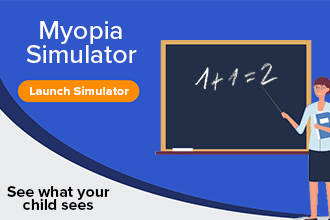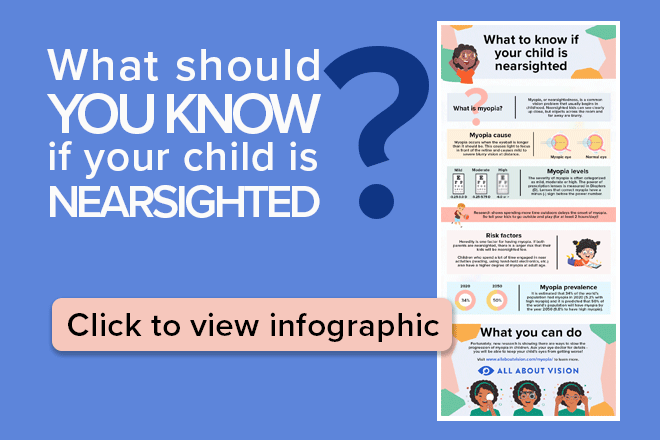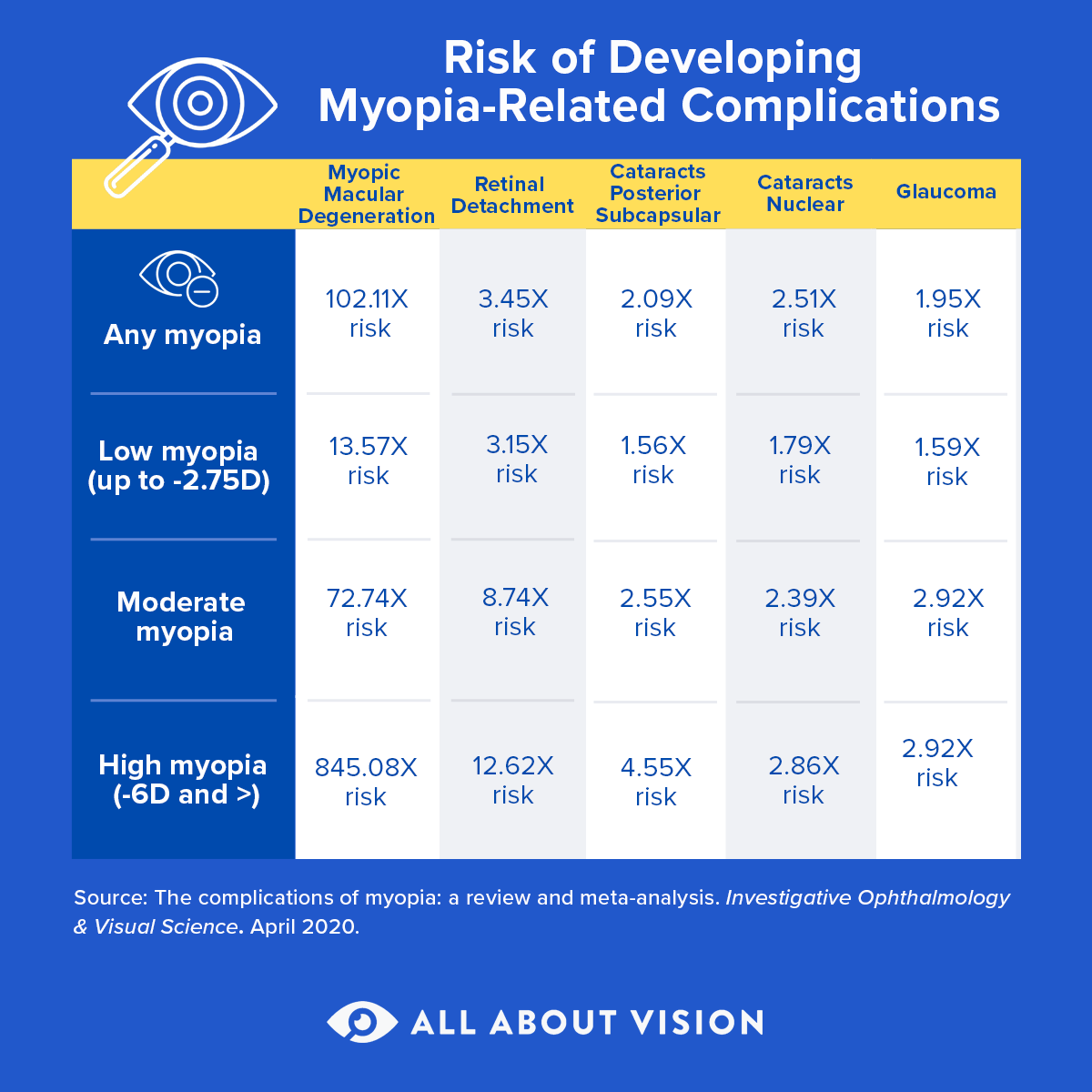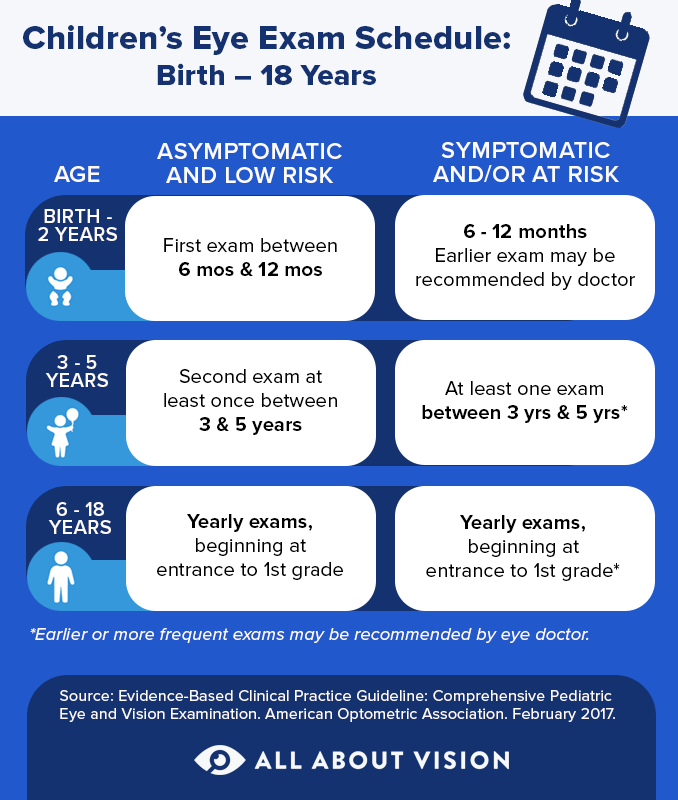Myopia progression: why it’s a concern and what you can do

Why progressive myopia is a concern
Progressive myopia is a concern because it can lead to high myopia. High myopia is the medical term for severe short-sightedness, which can increase a person’s risk of serious eye problems in adulthood. It’s important to manage progressive myopia during childhood, before it develops into high myopia.
Some children who develop myopia (short-sightedness) have a continual progression of their myopia. They need a stronger prescription year after year. This is progressive myopia, and it begins in early childhood.
Research has shown that the younger a child develops myopia, the faster their myopia can progress. And the faster myopia progresses, the more myopic the child will become.
For many families, the cost of eye exams and new glasses every year can be a financial strain, however, the long-term risks associated with myopia progression can be even greater.
More children are becoming nearsighted
Myopia is one of the most common eye disorders in the world. In Europe, the United States, and Australia about 30% to 40% of adults are short-sighted. Up to 80% or more of adults in several East Asian countries have myopia.
Researchers estimate that roughly half of the world's population will have myopia by the year 2050.
Classification of myopia severity
Myopia — like all refractive errors — is measured in optical units called dioptres (D).
Lens powers that correct myopia are preceded by a minus sign (-) and are usually measured in 0.25 D increments.
The severity of short-sightedness is often categorised like this:
Low myopia: -0.50 D to -5.75 D
High myopia: -6.00 D and greater
Having any degree of myopia can increase a person’s risk for serious, vision-threatening complications but the likelihood for complications increases even more as myopia progresses.
People who have progressive myopia and high myopia have a much higher risk of complications than those with low or no myopia.
Progressive myopia and high myopia-related eye problems
The most common cause of childhood myopia is the elongation of the eye from front to back. In progressive myopia, this elongation continues. Over time, the retina and other delicate tissues in the eyes become stretched and thin.
The eye problems associated with high myopia primarily result from this stretching and thinning. Unfortunately, they are serious and can cause irreversible vision loss and even blindness.
Myopic maculopathy
Myopic maculopathy is also known as myopic macular degeneration. The risk for myopic maculopathy increases exponentially as the level of myopia increases.
People with any myopia have a 100 times greater risk for developing myopic maculopathy. Those who have high myopia have more than 800 times the risk.
Cataracts
The odds of developing cataracts increase significantly for those with myopia. People with myopia are especially at risk for posterior subcapsular cataracts.
Further, people with high myopia tend to develop cataracts earlier and at twice the rate of people with low myopia.
Glaucoma
Myopia — even low myopia — greatly increases a person's risk of developing primary open-angle glaucoma.
People who are nearsighted are almost twice as likely to develop glaucoma. Having high myopia carries triple the risk for glaucoma compared to having no myopia.
Retinal detachment
Short-sightedness triples the likelihood that a person will experience retinal detachment. As with other myopia-related complications, the risk increases with myopia progression.
One study found that almost 55% of retinal detachments not caused by trauma are due to myopia. It is important to note that this can also occur in children with higher levels of myopia
What you can do about myopia progression
The best thing you can do about myopia progression is reduce your child's risk for developing myopia. Research shows that children who spend more time outdoors and less time doing near work have a lower prevalence of myopia.
Make sure children get at least 90 minutes of outdoor sunlight every day.
Restrict prolonged use of digital devices and screens, especially outside of school work.
Teach children the 20-20-20 rule and encourage them to use it frequently any time they are doing near work.
If your child already has progressive myopia, the best thing you can do is schedule regualr eye exams. Your optometrist needs to monitor how much and how fast your child’s eyes are changing.
You should also ask your optometrist about the myopia control measures available in your area. Myopia control glasses, ortho-k contact lenses and other options are effective ways to slow myopia progression.
If someone has progressed to high myopia, it is vital that they have a dilated eye exam. This more comprehensive exam is necessary to look for signs of the serious complications mentioned above.
Often, children with myopia don't complain about their vision or show obvious signs of short-sightedness. So be sure to schedule regular exams even if they say their vision seems fine.
Schedule regular eye exams
All children should have eye exams, even if they have no symptoms of vision problems. Eye exams are key in detecting and managing conditions like myopia as early as possible.
A child’s first eye exam should be done between ages 6 months and 12 months. They should receive another exam between 3 and 5 years of age, followed by exams every 2 years until adulthood.
If your child has myopia or is at risk of developing myopia, more frequent eye exams may be necessary. Your optometrist will let you know how often their eyes should be examined depending on their rate of myopia progression.
Gary Heiting, OD also contributed to this article.
Prediction of juvenile-onset myopia. JAMA Ophthalmology. 2015
Global prevalence of myopia and high myopia and temporal trends from 2000 through 2050. Ophthalmology. February 2016.
Epidemiology of myopia. Asia-Pacific Journal of Ophthalmology. December 2016.
The complications of myopia: a review and meta-analysis. Investigative Ophthalmology & Visual Science. April 2020.
Myopia prevention and outdoor light intensity in a school-based cluster randomized trial. Ophthalmology. August 2018.
Significance of outdoor time for myopia prevention: a systematic review and meta-analysis based on randomized controlled trials. Ophthalmic Research. March 2020.
Risk factors for idiopathic rhegmatogenous retinal detachment. American Journal of Epidemiology. April 1993.
Page published on Monday, 16 March 2020
Page updated on Friday, 11 August 2023
Medically reviewed on Friday, 8 April 2022










